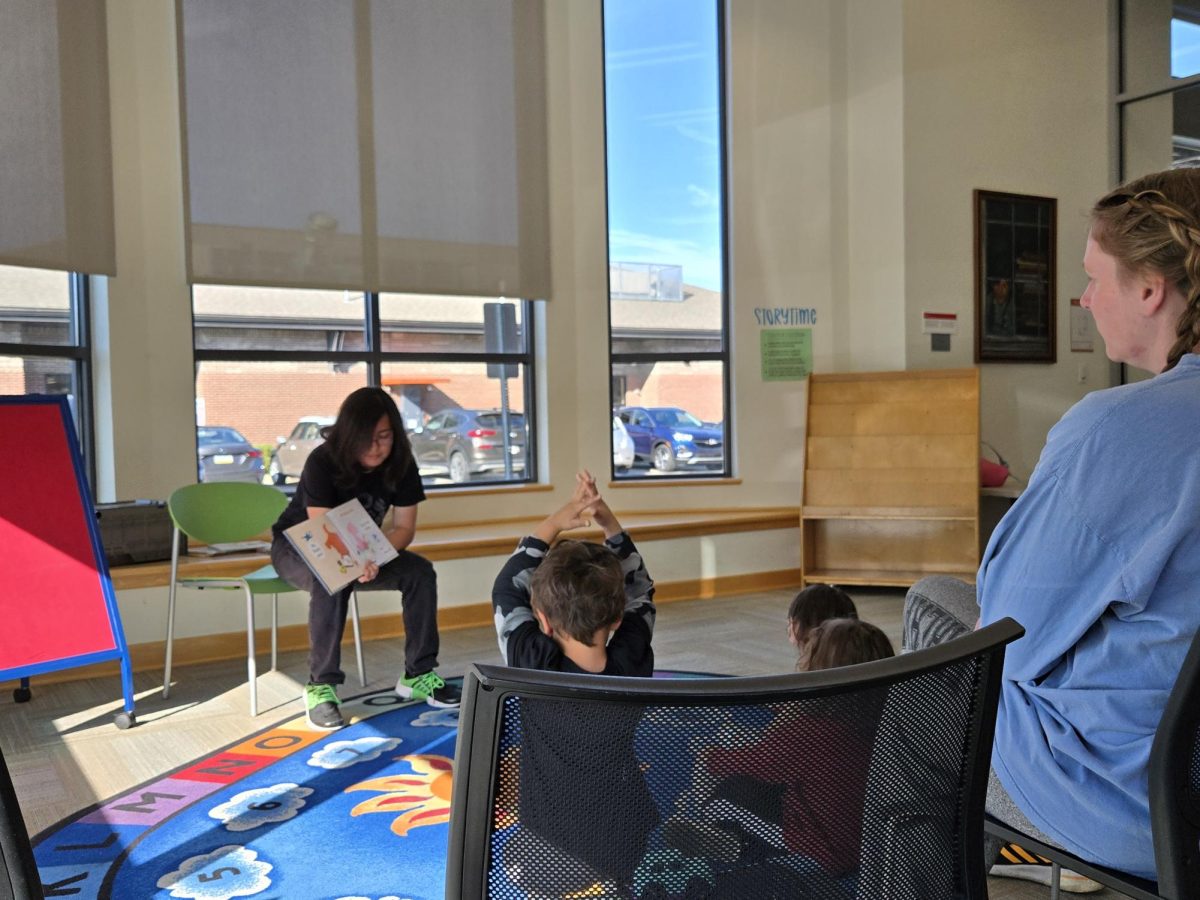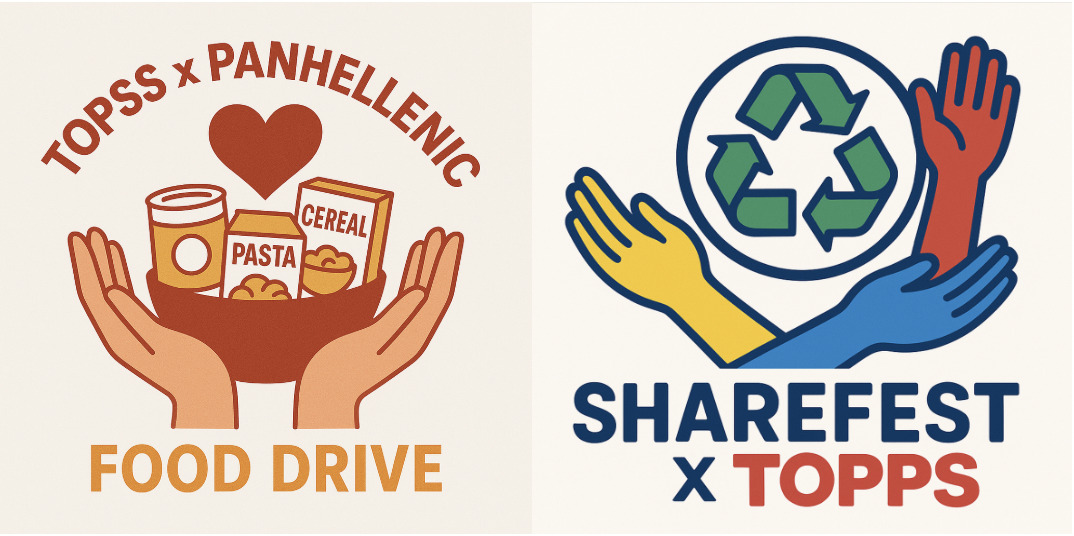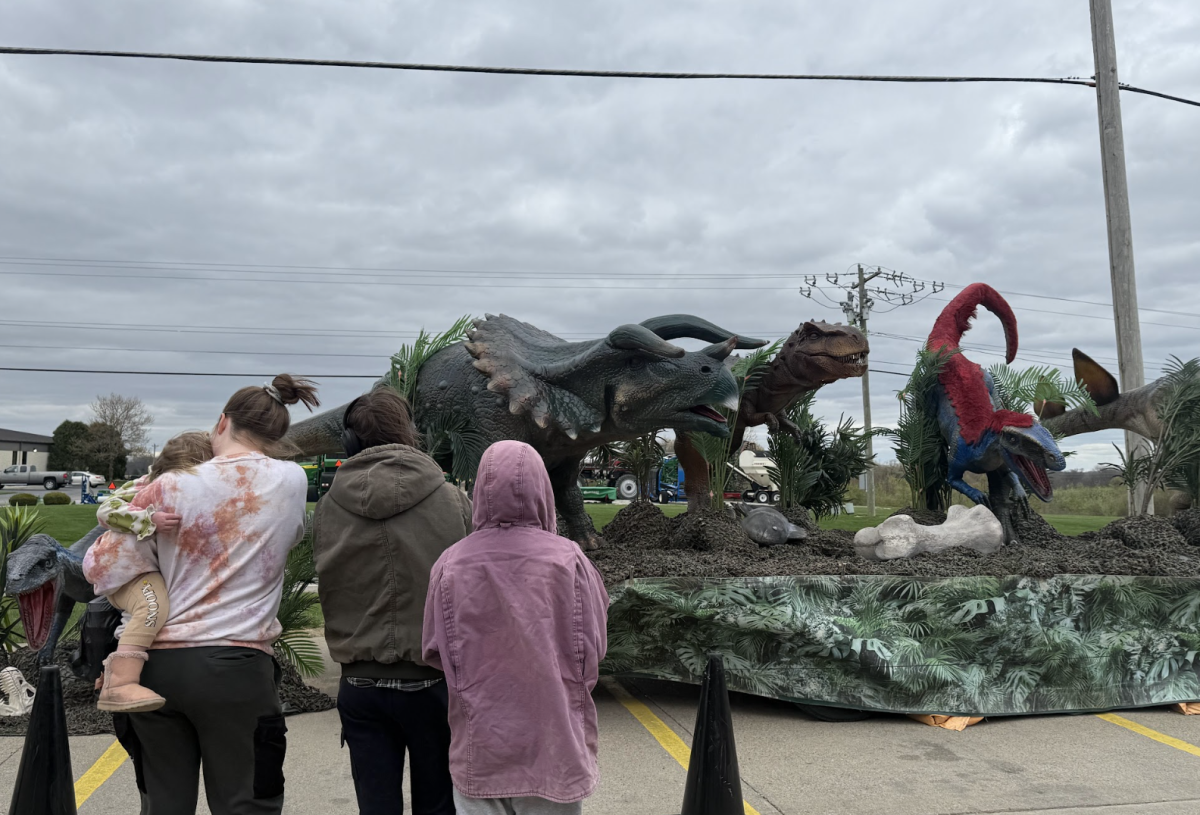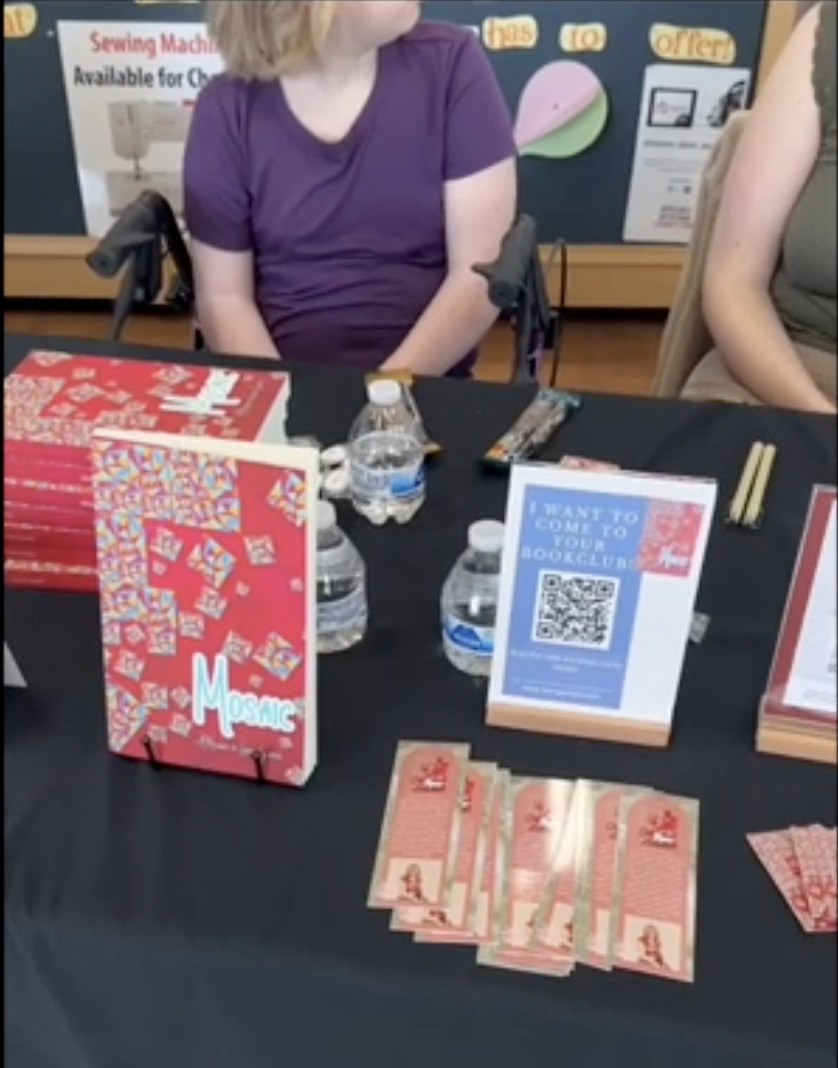Fabio Chirinos walked into the Helen Weinberger Activity Room at Oxford Lane Library and greeted the four small children and their parents in two languages.
After introducing himself as “Mr. Fabio” and getting to know his audience, he started reading a Spanish translation of Mo Willems’ “Don’t Let the Pigeon Drive the Bus!” Although most of the kids and parents knew the book well, Chirinos made sure to stop periodically so nothing was lost in translation.
This program, which took place Saturday, Oct. 26, was the second session of the library’s Storytime En Español, an hour of activities in English and Spanish for children ages 6 and under. Chirinos, 21, works at the library as a public services associate. He came up with the program as a family activity for immigrant and bilingual families.
He was partially inspired by his own parents, who are from Peru and speak both English and Spanish. He specifically mentioned his mother Mariana Llanos, a children’s author who has written books in both languages.
“The idea of a Spanish story time is something that I’ve kind of always wanted to do,” Chirinos said. “There are families who have immigrated here, and I think it’s important for them to have like, that sort of resource to be able to bring their kids to a story time that’s in their native tongue.”
He also cited his experience working in the planetarium at Science Museum Oklahoma. He said his boss there believed it was important that parents who spoke only Spanish should be able to enjoy their events without relying on their child to translate. This advice has stuck with Chirinos and it informs how he runs his story time.
“I think the way it should be is people should be able to enjoy things as they are,” he said. “They shouldn’t have to be forced to jump through hoops just to be able to spend time together as a family, right?”
Chirinos follows roughly the same structure as the other story time programs that take place at the library, but he likes to follow what he thinks the kids want. He prefers to start with a book to draw them in and end with a craft to give them an opportunity to burn off some energy and work with their hands.
“I kind of just go with the flow in terms of how the kids are,” he said. “If they’re having a lot of energy, if they’re being really active, I’ll sort of opt to more movement-focused activities.”
After the first book, the kids were acting a little restless. Luckily, Chirinos brought along a few tools he was pretty sure could cure their “wiggles,” as he called it.
He unfolded a multi-colored play parachute and had the kids and a couple parents gather around and each grab hold of a section. Once everyone had a grip, he began directing them in various movements: “arriba” (up), “abajo” (down), “izquierda” (left), and “derecha” (right). After a few minutes, everyone was a little calmer and maybe knew a few more words in Spanish than before they grabbed the parachute.
Chirinos then continued with another story. This time, it was a bilingual book called “I’m Not Sleepy/No Tengo Sueño” by Angela Domiguez. Once that was finished, the kids were ready for more audience participation. So, Chirinos began an activity based on the book “Go Away, Big Green Monster!” by Ed Emberley.
As Chirinos read from the book, the kids constructed the face of the monster on a green puppet he wore on his hand. This allowed him to teach words for body parts like “nariz” (nose), “boca” (mouth), “dientes” (teeth) and “ojos” (eyes). Most of all, it provided a few good laughs as the monster’s silly face was revealed, especially from Chirinos himself. More than once, he struggled to even read from the book because of his laughter.
The program ended with one more hands-on activity. This time, Chirinos walked through how to make an “araña” (spider) out of pipe cleaners, yarn and toothpicks. The finished product was a cute souvenir that could also be a reminder of some of the Spanish vocabulary they learned.
Although Chirinos initially had immigrant families in mind for this program, the program was attended by a mix of bilingual families and some who do not already speak any Spanish at home.
One mother, Allie Gresham, said her family does not Spanish at home, but that she is trying to learn using the online program Dreaming Spanish. She also said her 5-year-old son, who she brought to the story time program that morning, learned some Spanish in preschool.
Gresham said she would like her and her children to be able to communicate with their Spanish-speaking friends in their native language. She said they also enjoy learning from library programs like the story time and “Family Literacy Night,” an event that took place earlier this month featuring Mariana Llanos.
“We like to stay connected with the events at the library, especially when they help us learn more about other cultures,” Gresham said.
The library does not another Storytime En Español on the schedule this year, but Chirinos said he hopes to make it a monthly event. He expects to start monthly story times this coming spring.













